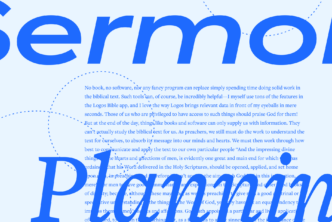In a previous post, we looked at how English translations delimit the quotation in James 4.5. Do other resources shed any light on this question?
Greek New Testaments
We can examine the formatting of Greek New Testaments much like we examined the formatting of English New Testaments. In Logos Bible Software, the relevant Greek NTs are the NA27 and UBS4 editions along with Westcott & Hort. If you have a product from Thomas Nelson, you may also have the Hodges/Farstad edition of the Majority Text, this is formatted as well.
In the above, you can see that Hodges/Farstad formats v. 6 as a quotation (complete with angle quotes). In v. 5, the relevant portion appears to be treated as a quotation of some sort; this is traditionally what an upper-cased letter after introduction would imply (ἡ Γραφὴ λέγει, Πρὸς φθόνον ἐπιποθεῖ). The upper-case gamma in Γραφὴ also implies the editors see this as referring to the Scriptures, and not to generic writings of some sort.
The NA27 uses italicised text for v. 6, which indicates an Old Testament quotation. But no special formatting or casing appears in v. 5. The UBS4 is similar, only they have no special formatting implying quotation or quotation source.
Westcott and Hort use bold text to indicate some sort of quotation or allusion (not always to the Old Testament). So v. 6 includes a quotation, but no special formatting on v. 5. (note also the placement of the question mark in WH vs. NA27/UBS, that could be significant when translating the verses).
Lexham Syntactic Greek New Testament
The Lexham SGNT marks what the editor considers to be quotations from or allusions to external source with what is called a Quotative Frame.
The Lexham SGNT Glossary defines the Quotative Frame as follows:
Quotative Frame: A frame which contains an explicit quotation, or citation, from an external source. Where allusion occurs or where, as in sections of Hebrews, the text of external sources is woven inextricably into the main text, this is annotated as if it were original on the part of the author.
Lukaszewski, A. L. (2006; 2006). The Lexham Syntactic Greek New Testament Glossary. Logos Research Systems, Inc.
Commentaries
Logos Bible Software has a wide selection of Commentaries. Commentaries focused on working through the Greek text or that are focused on interpretational difficulties will assist one in this verse. I’ve reviewed a few commentaries on this verse (NIGTC, Hermeneia, ICC, Word Biblical Commentary) and they don’t agree any more than the translators do. But the better commentaries will explore the possibilities and explain the positives and negatives of each in some degree of detail before arriving at a conclusion. Comparing these sorts of discussions across commentaries can be enlightening and helpful in sticky situations like this one.
Conclusion
Using resources like these — in ways you may not have thought of — helps in examining the questions we’ve run into in James 4.5. Hopefully this series of posts has been helpful.
My primary purpose has been to show that when one runs into ambiguities in the text, there are a lot of places one can turn. The options are knowable and explorable, utilizing both textual resources (Bibles and commentaries), databases (morphology and syntactic databases) and reports (like Passage in all Versions). So next time you run into an ambiguity … have fun digging!






